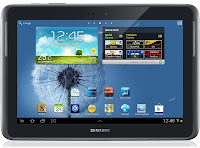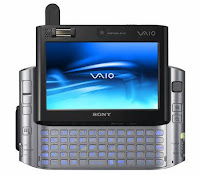Computers come in a variety of types designed for different purposes, with different capabilities and costs.
Microcomputers
A microcomputer is a computer that has a microprocessorchip (or multiple microprocessors) as its CPU. They are often called personal computers because they are designed to be used by one person at a time. Personal computers are typically used at home, at school, or at a business. Popular uses for microcomputers include word processing, surfing the Web, sending and receiving e-mail, spreadsheet calculations, database management, editing photographs, creating graphics, and playing music or games.
Personal computers come in two major varieties, desktop computers and notebook computers:
a)Desktop computers are larger and not meant to be portable. They usually sit in one place on a desk or table and are plugged into a wall outlet for power. The case of the computer holds themotherboard, drives, power supply, and expansion cards. This case may lay flat on the desk, or it may be a tower that stands vertically (on the desk or under it). The computer usually has a separate monitor (either a CRT or LCD) although some designs have a display built into the case. A separate keyboard and mouse allow the user to input data and commands.
b)Notebook or laptop computers are small and lightweight enough to be carried around with the user. They run on battery power, but can also be plugged into a wall outlet. They typically have a built-in LCD display that folds down to protect the display when the computer is carried around. They also feature a built-in keyboard and some kind of built-in pointing device(such as a touch pad).
While some laptops are less powerful than typical desktop machines, this is not true in all cases. Laptops, however, cost more than desktop units of equivalent processing power because the smaller components needed to build laptops are more expensive.
There are also less-powerful versions of notebook computers called subnotebooks, and netbooks that are used mainly to access the Internet.
TABLET COMPUTER AND SMARTPHONES..
- A Tablet Computer (often just called a tablet) generally has the format of a handheld slate consisting of a large LCD touchscreen used for both input and output. Tablets typically include a WiFi and/or cellular network data connection to access the Internet. Tablets run applications specifically designed for these touchscreen devices, but they also can do some activities such as word processing or spreadsheets, although the lack of a physical keyboard usually makes such activities more cumbersome on tablets than they are on desktop or notebook machines. Examples of tablet computers include the Apple iPad and machines from various manufacturers that run the Android OS.
- Smartphonestouchscreen for input, but some include physical keyboards.
PDAS AND PALMTOP COMPUTERS...
- Personal Digital Assistant
- palmtop
Some PDAs and palmtops contain wireless networking or cell phone devices so that users can check e-mail or surf the web on the move.
WORKSTATION/SERVER.. |
|











No comments:
Post a Comment